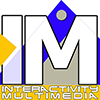Contents
Padlet is an extremely easy-to-use tool that allows learners to collaborate online by posting text, images, links, documents, videos, and voice recordings. Padlet offers the user various types of pin walls. They can be structured in different ways. One option is a timeline. Trainers can use these timelines for displaying the structure of the course (as a preview of the activities). It is possible to insert texts and all types of multimedia material in these timelines.
Other uses of Padlet timelines
Trainers can use these timelines as well for historical context. As well, it is possible to use it as a type of progress indicator in a course: Each activity is entered in the timeline, thus creating a chronologically ordered documentation of the course.
Another possibility is to enter the learners’ individual work results in this timeline as links, thus documenting the learners’ work.
Collaborative use of Padlet
Padlet allows synchronous or asynchronous collaboration. Learners can share ideas, materials, audio, and video. The trainer may create the Padlet and distributes the link to the trainees. Each learner may add content to the Padlet.
The timeline can be used to develop learning content:
Each learner adds at a certain point their own idea to the assignment. The timeline is used as the linear description of the content. Since it is possible to change the order, the complete structure of the content is available at the end. With this structure, each learner can finalize an individual work based on the jointly created structure.
General considerations for Padlet Timelines
Summarizing, the Padlet timeline offers numerous options and opportunities for learning or training:
- Creating a timeline of key concepts and/or theorists.
- Adding cultural context to historical points.
- Describe and discuss the stages of a process, such as an experiment.
- Creating a class journal describing and discussing key points across a module.
- Create an image gallery of the development of buildings, crafts, and other items that might need documentation.
How to create a timeline with Padlet
- Create a new Padlet board and choose a background that suits your timeline theme.
- Click on the “+ Add a note” button and create a note that represents the starting point of your timeline. You can add a title, description, and image to the note.
- Click on the note and drag it to the left or right to adjust its position on the board. You can also resize the note to make it more visible.
- Add more notes to represent the events or milestones that you want to include in your timeline. You can use different colors, fonts, and icons to differentiate between different types of events.
- Drag and drop the notes to arrange them in chronological order. You can also add arrows or lines to connect the notes and show the flow of time.
- Add more details to each note by clicking on it and inserting links, images, videos, or comments. You can also allow others to contribute to your timeline by sharing the Padlet board with them and giving them edit or comment access.
- Once your timeline is complete, you can share it with others by embedding it on a website or presenting it in a slideshow format using Padlet’s presentation mode.
Summary
Timelines of Padlet are versatile tools for cooperation, documentation, and presentation.
More information about Padlet is available on this project page.
Views: 3122
